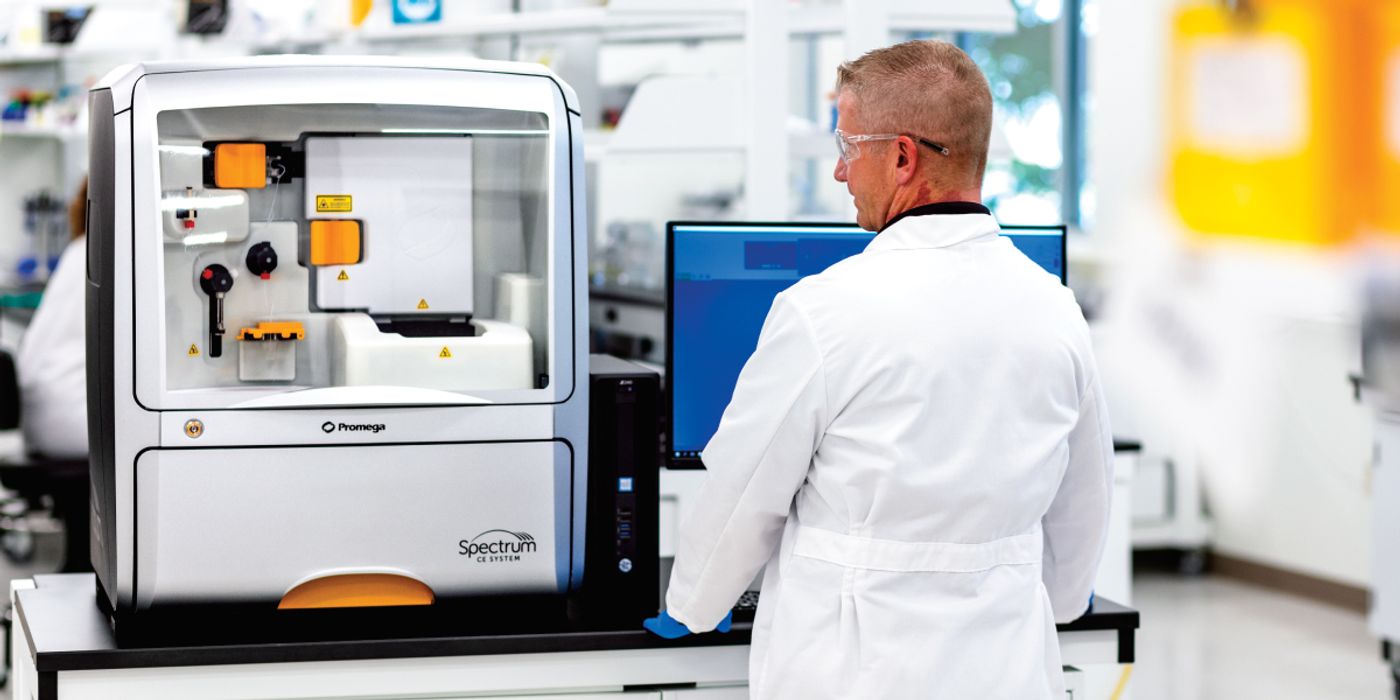How to Improve Forensic DNA Analysis with 8-Dye STR Multiplex Technology
Forensic DNA analysis can provide conclusive evidence to trace specific individuals to a crime scene and has been instrumental in solving cold cases, exonerating the wrongfully accused and bringing justice to victims. It also aids in identifying disaster victims, resolving paternity disputes and assisting in missing persons cases.
There are several methods by which forensic scientists can process DNA samples, but short tandem repeat (STR) analysis through capillary electrophoresis (CE) remains the gold standard. However, scientists can encounter problems using STR analysis to process DNA samples in the lab if these samples are degraded, inhibited, mixed or present only in trace amounts.
A key advance for addressing those challenges was the introduction of 8-dye STR multiplex technologies. With eight dye chemistry, forensic analysts can achieve more accurate and reliable DNA profiling, even in complex cases, leading to improved human identification and greater overall efficiency in forensic DNA testing. These next-generation 8-dye STR multiplex technologies include new tools like the Spectrum CE and Spectrum Compact Systems for CE and the PowerPlex® 35GY System for PCR amplification and fluorescent detection.
Read on to learn how expanding to eight dyes can improve STR analysis for forensic DNA samples.
Benefits of Expanding to 8-Dye STR Systems
Currently available STR multiplex kits rely on five or six colors of dyes to mark regions of DNA that can help identify (or exclude) a match between a known individual and a casework sample. The PowerPlex® 35GY System is the first to include eight dyes and the Spectrum CE System is the first commercially available capillary electrophoresis instrument equipped for eight-dye fragment analysis. By increasing dye colors from five or six to eight, together, these systems allow forensic scientists to examine a larger set of loci for their DNA analyses.
Some of the benefits users get by expanding to eight dyes in this system are:
- Including Penta D, Penta E and SE33 loci increases resolution, allows wider database searching and improves the discriminatory power of analysis between individuals.
- Ten additional male-specific markers increase the amount of data obtained in a single amplification and can provide valuable insight for genealogy or in the analysis of sexual assault evidence by helping determine the number of male contributors in a sample.
- More loci can be reformatted as “mini-STRs”.
Why Mini-STRs Improve Results with Degraded Samples
The environmental conditions encountered in forensic casework, mass disasters and missing persons scenarios can lead to severe degradation of human DNA samples. Such highly degraded samples often produce incomplete or no STR profiles due to larger loci that can “drop out”. The inclusion of more loci as mini-STRs—or STR loci with fewer than 250 base pairs—in the PowerPlex® 35GY System results in better and more complete profiles, making this system an ideal option to process cold-case samples and newer, difficult sample types.
Quality Indicator Peaks are an Internal Control
When working with casework samples that are degraded or that have been exposed to the environment, when STR analysis of the amplicons fail, it can be challenging to determine if the failure is due to user error or an issue with the sample. Quality indicators in STR multiplex systems can be one set of internal controls. By monitoring the height and shape of these peaks, analysts can quickly determine if amplification was successful by confirming if DNA is present or if the sample amplification was inhibited. Unlike cases where there’s an amplification issue or user error, an analyst may choose to not repeat sample analysis if they learn the sample is too degraded.
The PowerPlex® 35GY System includes two quality indicator peaks to assist with data interpretation.
Conclusion
The combined use of the Spectrum CE System or the Spectrum Compact CE with the PowerPlex® 35GY System addresses major pain points experienced by forensic scientists in the lab. These systems can help streamline STR analysis, offering greater efficiency and reliability in forensic DNA testing. This in turn can provide crucial information needed to help solve difficult cases, both current and cold.
Learn more about 8-Dye STR multiplex technology.









